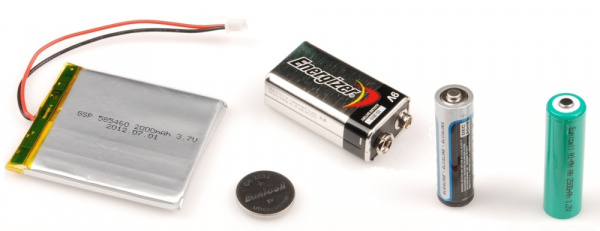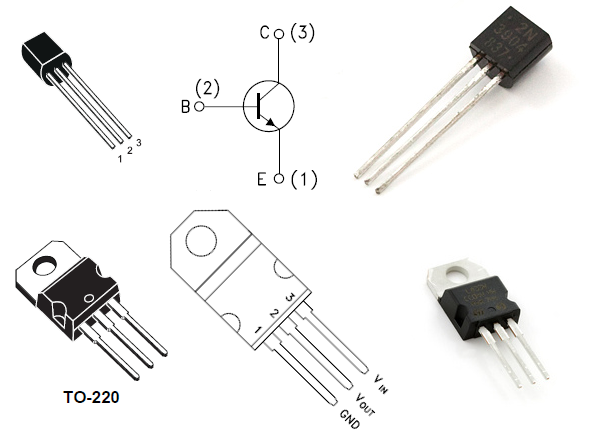Polarity
Other Polarized Components
Batteries and Power Supplies
Getting polarity right in your circuit all starts and ends with getting the power supply connected correctly. Whether you're project's getting power from a wall-wart or a LiPo battery, it's critical to make sure you don't accidently connect them backwards and apply -9V or -4.2V to your project accidently.
Anyone that's ever replaced batteries knows how to find their polarity. Most batteries will indicate the positive and negative terminals with a "+" or "-" symbol. Other times it might be red wire for positive and a black wire for negative.
Power supplies usually have a standardized connector, which should usually have polarity itself. A barrel jack, for example, has two conductors: outer and inner; the inner/center conductor is usually the positive terminal. Other connectors, like a JST, are keyed so you just can't connect them backwards.
For extra protection against reversing power supply polarity, you can add reverse polarity protection using a diode, or a MOSFET.
Transistors, MOSFETs, and Voltage Regulators
These (traditionally) three-terminal, polarized components are lumped together because they share similar package types. Through-hole transistors, MOSFETs, and voltage regulators commonly come in a TO-92 or TO-220 package, seen below. To find which pin is which, look for the flat edge on the TO-92 package or the metal heatsink on the TO-220, and match that up to the pin-out in the datasheet.
Etc.
This is just the tip of the polarized-component iceberg. Even non-polarized components, like resistors, can come in polarized packages. A resistor pack -- a grouping of five-or-so pre-arranged resistors -- is one such example.
Fortunately, every polarized component should have some way to inform you which pin is which. Be sure to always read the datasheets, and check the case for dots or other markers.



